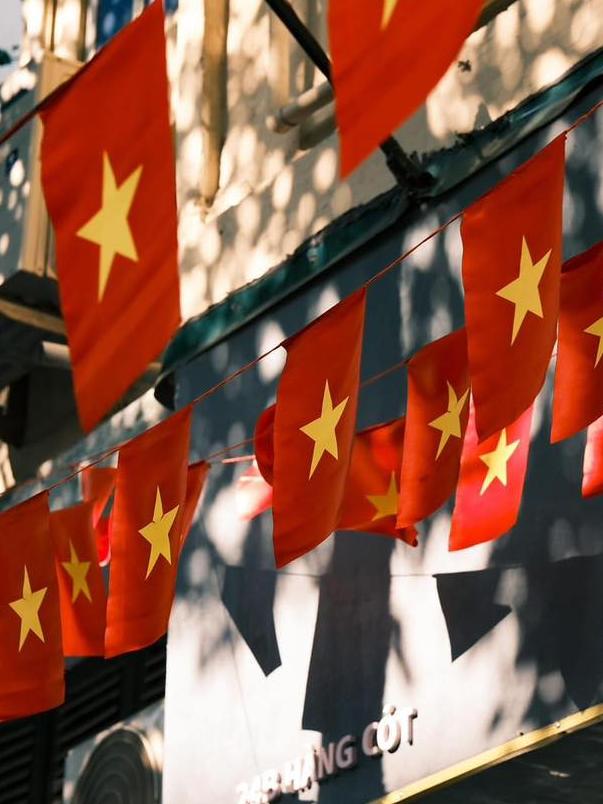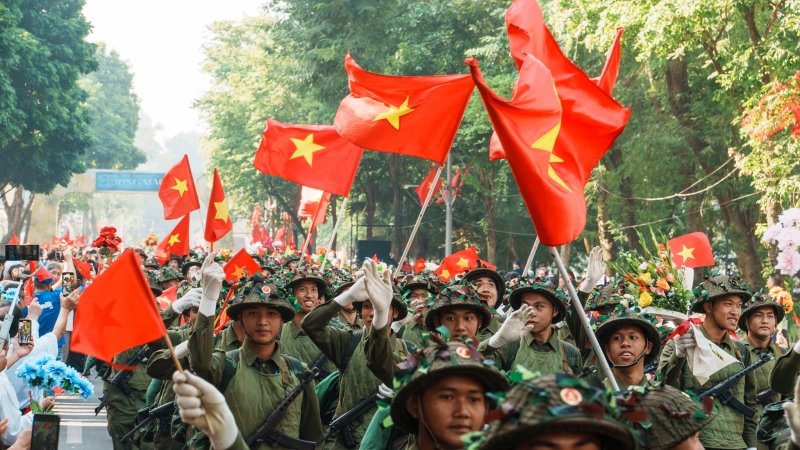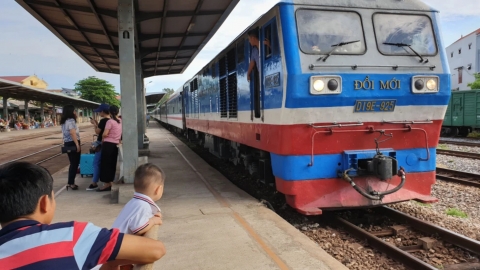“In the middle of the capital
Uncle Ho returns
Soldier
Enter the five gates
We're home, Hanoi!
The person who fought in the resistance for eight years
Back here in Hanoi today
Tears of joy and tears of laughter"
(excerpt from To Huu's poem)
On October 10, 1954, Hanoi was liberated, a brilliant historical milestone, an epic in the Ho Chi Minh era, opening a new period of development for the capital and the country. These days, the streets of Hanoi are decorated brilliantly with the red color of flags, banners, and slogans celebrating the 70th anniversary of the Liberation of the Capital. Also on this occasion, international visitors can visit places associated with the Liberation of Hanoi.
Long Bien Bridge, witness of history
Long Bien Bridge is a bridge known as the "historical witness" of our country. Through the ups and downs of time and historical events, the bridge still stands tall and has become one of the symbols of Hanoi. Long Bien Bridge is the first steel bridge across the Red River connecting the two districts of Hoan Kiem and Long Bien in Hanoi. The bridge was built by the French from 1898 to 1902 under the then Governor-General of Indochina, Doumer. The bridge is 2,290m long across the river and 896m of approach bridge, the bridge consists of 19 steel girder spans placed on 20 pillars with a unique architectural style. The bridge is designed with a single railway running in the middle and two lanes on both sides for bicycles and pedestrians.
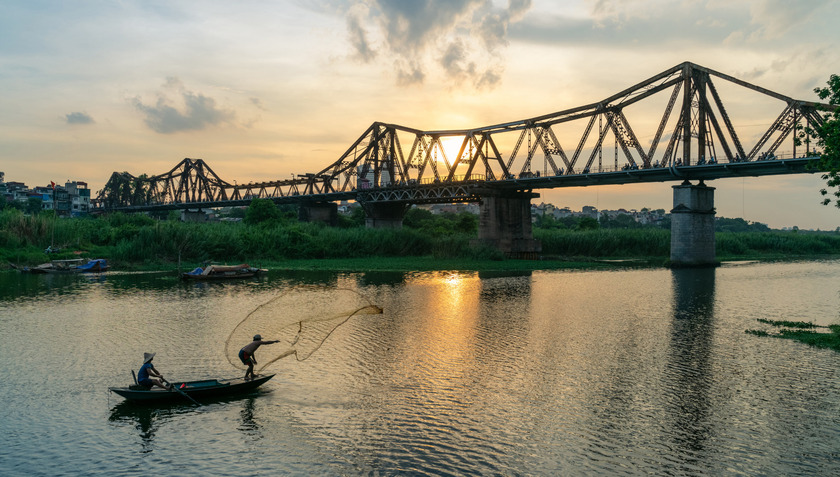
Historical traces imprinted on the bridge
The entire nation was determined to join hands and unite, establishing Dien Bien Phu in 1954 "Resounding throughout the five continents, shaking the earth", forcing the French colonialists to sign the Geneva Agreement on July 21, 1954, recognizing the independence, sovereignty and territorial integrity of the three Indochinese countries, and accepting the withdrawal of troops from North Vietnam.
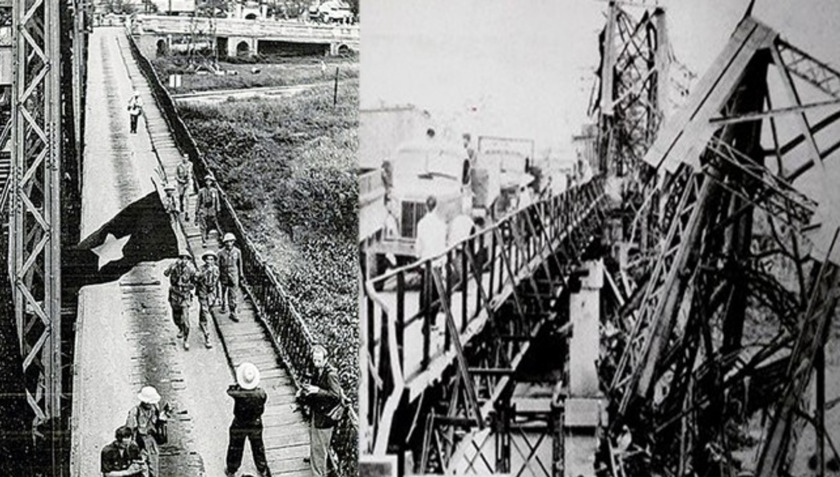
Unforgettable historical memories of the Capital
True to the promise, after 9 years of long and arduous resistance, with the indomitable fighting spirit of “tasting gall and lying on thorns, unflinching courage and unwavering will” of our army and people, the soldiers returned on the historic Long Bien bridge.
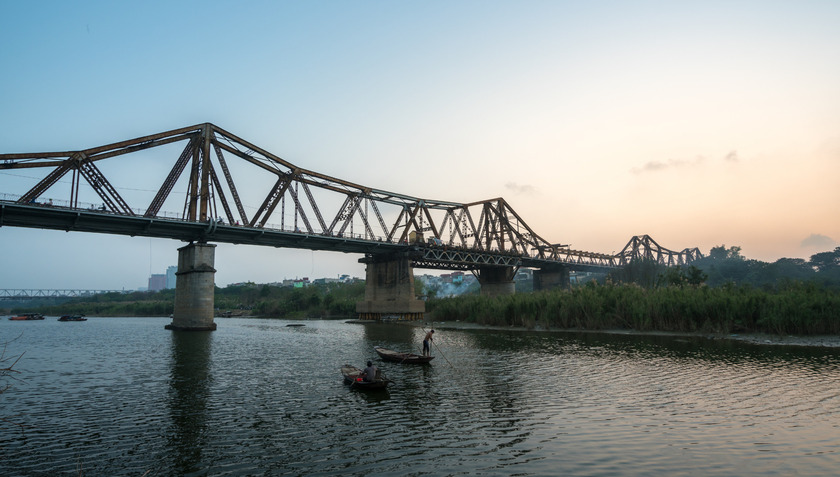
Long Bien Bridge is the first steel bridge across the Red River connecting Hoan Kiem and Long Bien districts of Hanoi.
On October 8, 1954, the French army held a flag-lowering ceremony and on October 9, they began to withdraw from Hanoi. As the French army withdrew, our troops took over. At 4:00 p.m. on October 9, 1954, the last French soldiers withdrew across Long Bien Bridge, and our army and people completely controlled the city. The bridge was the place to welcome the victorious army to take over the capital.
Bac Bo Palace, historical mark of the Capital
The Northern Palace, also known as the Imperial Envoy Palace, is now the Government Guest House, located at 12 Ngo Quyen Street, Hoan Kiem District, Hanoi. The Northern Palace is located in the center of the capital, 500m east of Hoan Kiem Lake, on the left is Chi Linh flower garden (now Ly Thai To flower garden) and behind is the City Central Post Office.

The North is covered in the autumn light of the Revolution.
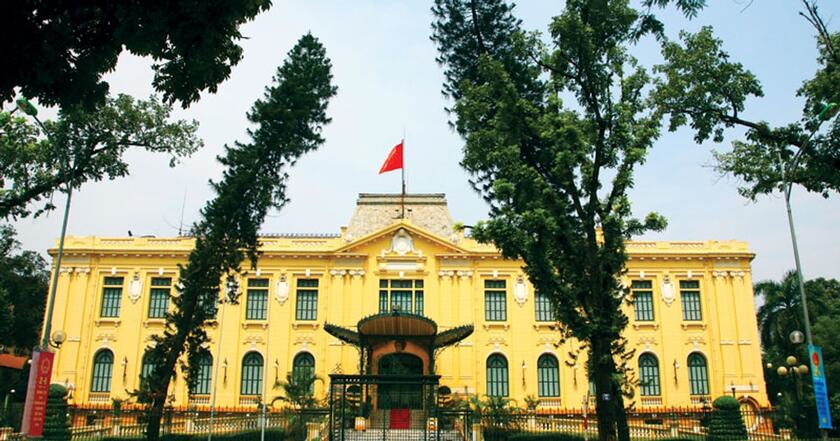
The relic of Bac Bo Palace, now the Government Guest House
Previously, the Tonkin Palace was the head office of the French administration in Tonkin, under the supervision of the Governor-General of Indochina. The building experienced both the fierce resistance wars against the French and the Americans. The Tonkin Palace was one of the first places the Vietnam People's Army took over in the capital on that historic day 70 years ago.
The Citadel (Imperial Citadel of Thang Long) carries within it a historical story.
Doan Mon - Thang Long Imperial Citadel is where our Army gathered when taking over the Capital on October 10, 1954. The relic is located in the South of Kinh Thien Palace, in line with Hanoi Flag Tower.
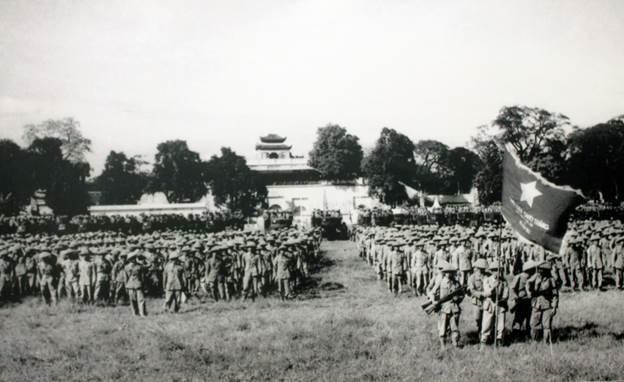
Historic flag-raising ceremony on Capital Liberation Day at Doan Mon
Doan Mon is not only an ancient architectural work but also a living historical witness, marking the heroic history of the Vietnamese people. The image of the red flag with yellow star fluttering on top of the gate has become an immortal symbol, marking a golden history of the nation. Each brick, each trace on the wall is a story, a mark of time.
Hanoi flagpole, forever flying the national flag
The construction of the flagpole began in 1805 under the Nguyen Dynasty and took 7 years to complete. Since then, through more than 200 years of history, the Hanoi Flag Tower has been associated with the ups and downs of the Capital. In 1945, the August Revolution succeeded, the red flag with a yellow star was raised for the first time on the Hanoi Flag Tower. On the Capital Liberation Day of October 10, 1954, the national flag once again flew atop the historic flagpole. This has become a historical relic of the Capital and the whole country.

"Symbol of the Capital"
With a total height of 41.4m (including the flagpole), visitors can easily see the Hanoi Flag Tower from afar. The flagpole has a structure of 3 floors and 1 tower, connecting the floors with spiral staircases for movement.
The flagpole's bases are all built in the shape of truncated square pyramids, with areas gradually decreasing and stacked on top of each other. The first floor is 3.1m high, with each side measuring 42.5m long. The second floor is 3.7m high, with each side measuring 27m, with three out of four doors having inscriptions, including Huong Minh (South door), Nghenh Huc (East door) and Hoi Quang (West door). The third floor is 5.1m high, with each side measuring 12.8m, with a stairway facing North.
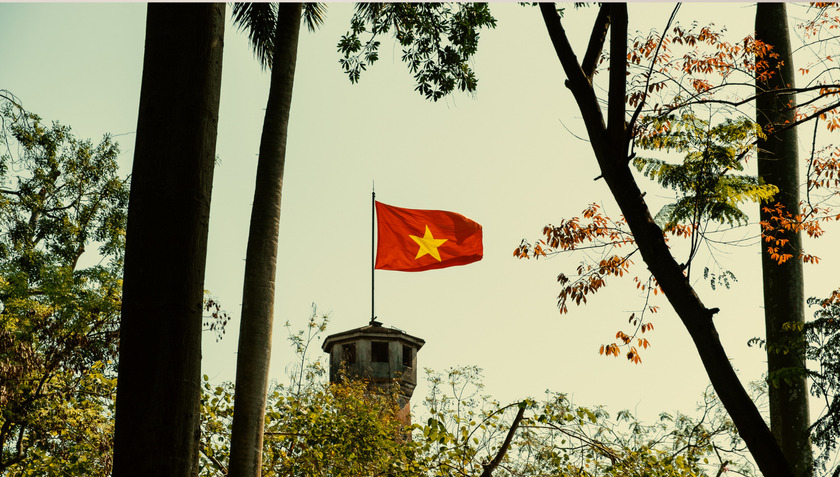
The flagpole is also a testament to a glorious period of resistance against the French, a mark of resilience and indomitability of generations of Hanoi citizens.
The national flag hanging on top of the flagpole has an area of 24m2 (4 x 6 m) and is sewn with satin fabric. The corner of the flag is covered with diamond-shaped panels to withstand strong winds. The image of the red flag with yellow star on top of the flagpole fluttering in the wind, standing out against the blue sky, has a sacred and heroic meaning.
Kim Ma Street, where history passes through
On the important day 70 years ago, the people of the Capital stood on both sides of Kim Ma Street to welcome the 308th Division to take over the Capital. Currently, Kim Ma Street is always bustling with traffic, playing the role of one of the important traffic axes of Hanoi.

Kim Ma Street marks a brilliant milestone of the Capital
These days, many areas on the streets of Hanoi are brightly decorated with flags and flowers to celebrate the 70th anniversary of the Liberation of the Capital. Hanoians also expressed their joy and excitement at the positive changes of the Capital. Hanoi has truly transformed itself to adapt to the era of industrialization and modernization, but still retains intact historical and cultural sites associated with the heroic tradition of the heroic Capital, a thousand years of civilization.





